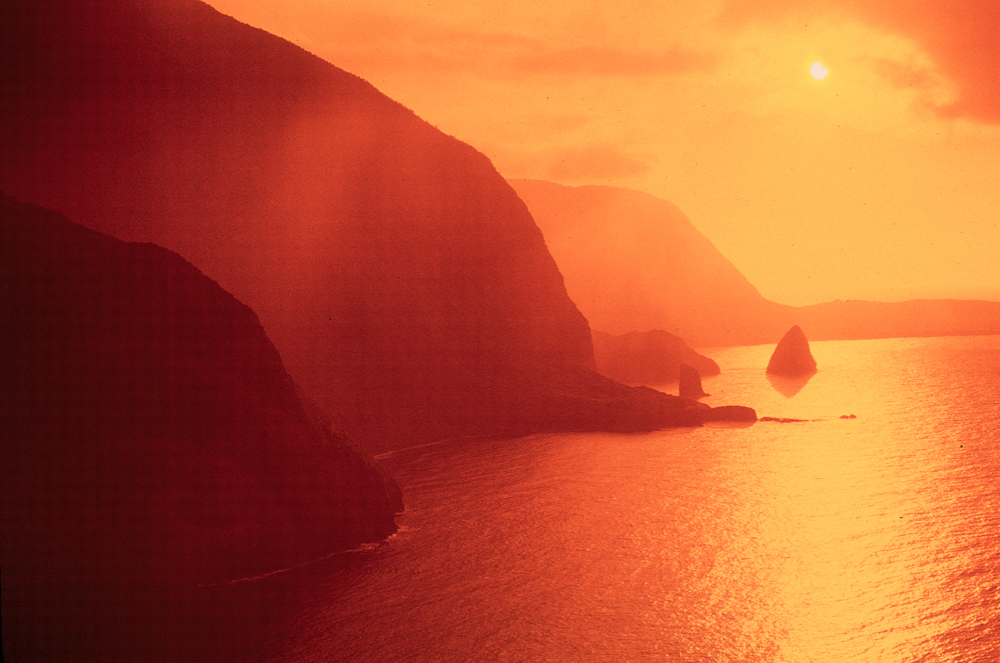There might not be glamorous nightclubs, trendy boutiques or extravagant rooftop restaurants, but this rooted island is as energized as ever. With a simple, flowing essence, it is here you will find style, authenticity and the vacation you were hoping for.
Text by Kelli Gratz
Image by Ric Noyle
First-time visitors tend to associate Hawai‘i with hula, surf and mai tais – that trifecta of local passion – but Moloka‘i, known as “friendly isle”, tells the story of Hawai‘i as it was, transcending both time and place. A true representative of the past, the island of Moloka‘i is said to be the “most-Hawaiian” of all the islands in both look and feel.
Here, you won’t find sleek boutiques, skyscrapers, or even a single traffic light. Instead you’ll gaze upon mystifying, cosmic sea cliffs, undiscovered, white sand beaches teeming with sea life, and culture deep in Hawaiian traditions that truly imparts Moloka‘i as “Hawaiian by nature.”
Arriving in Moloka‘i, you will find yourself transported back in time to a place truly reminiscent of old Hawai‘i.
A place considered the birthplace of hula more than deserves a visit. Head to the district of Ka‘ana, where you will find Pu‘u Nana, a sacred hill in which Laka, goddess of hula, gave birth to the dance. Laka traveled island-to-island teaching those who wished to learn the art of hula.
Legend has it after she passed away, her remains were hidden somewhere beneath the hill. Her spirit is recognized every May, when Moloka‘i Ka Hula Piko, or “Moloka‘i, the Center of Dance,” a daylong hula festival takes place at Papohaku Beach Park in her honor.
For breakfast, you’ll want to head to the charming paniolo (Hawaiian cowboy) town of Kaunakakai. Once a summer home to King Kamehameha V, Kaunakakai is the closest thing you’ll get to a bustling city.
Home of Moloka‘i’s famous “hot bread,” Kanemitsu’s Bakery & Restaurant is sure to liven your taste buds with their famous assortment of fresh sweet papaya, cinnamon-apple and taro breads.
Don’t forget their fresh, pull-apart loaves filled with jelly, cream cheese, butter and sugar.
Spend the rest of the day exploring Moloka‘i’s largest port town. Nearby attractions include RW Meyer Sugar Mill, Purdy’s Macadamia Farm and Pala‘au State Park, where Moloka‘i’s scenic north coast, indented by some of the most arresting cliffs in the world, is in view.
 Image by John Hook
Image by John Hook
The 27-mile journey from Kaunakakai to the Kalaupapa is said to rival the road to Hana in both beauty and personality.
Take Highway 450 east and stop near the 16-mile mark, where ‘Ili‘ili‘ōpae Heiau, an ancient Hawaiian temple site, is revealed. The heiau is one of the largest and oldest temples in all of Hawai‘i and continues to be regarded as sacred grounds.
Legend tells of a priest named Kamalo who lost nine of his sons at this very site from ritual sacrifices. He prayed to his ‘aumakua (family god), who then sent floods to wash most of the site away. Visitors are required to obtain permission before entering and are forbidden to touch any part of the temple.
At the Kalaupapa overlook, the village below is both intricate and stunning, as is the story behind it.
Located on Kalaupapa peninsula at the base of the highest sea cliffs in the world, is the Kalaupapa National Historic Park. Once the site where more than 8,000 victims of Hansen’s disease, or as the Hawaiians called it, mai ho‘oak‘awol, “the separating disease,” were exiled until 1969.
Father Damien, a Belgium priest, came to the settlement in 1873 to care for the disease-stricken and spent 16 years of his life caring for the ill, until the disease finally became him.
Damien’s legacy endures and Kalaupapa remains a National Historic Landmark and home to a small community of the formerly affected and their descendents.
The 2.9-mile trail down can only be accessed by foot or by authorized tour groups such as the Moloka‘i Mule Ride or Damien Tours.
No trip to Moloka‘i is complete without a visit to Halawa Valley. A rich agriculture region, is home to the oldest known Hawaiian settlement, which took place in the seventh century by people from the Marquesas Islands.
Activities here include swimming, snorkeling, boating, fishing, camping and hiking. Two waterfalls, Moa‘ula and Hipuapua, are located in this valley.
The 250-foot Moa‘ula Falls is approximately two miles up the valley. Legend tells of a huge mo‘o or lizard that occupys the pond.
Before entering the water, you must drop a ti leaf into the pond and if it floats, it is safe to enter; if it sinks, you are not welcome.
The island of Moloka‘i brings you closer to the heart of what’s real and true, and after all, traveling isn’t about the place, but engaging and committing yourself to a purpose, and that purpose only makes the quest for adventure all the more appropriate.

